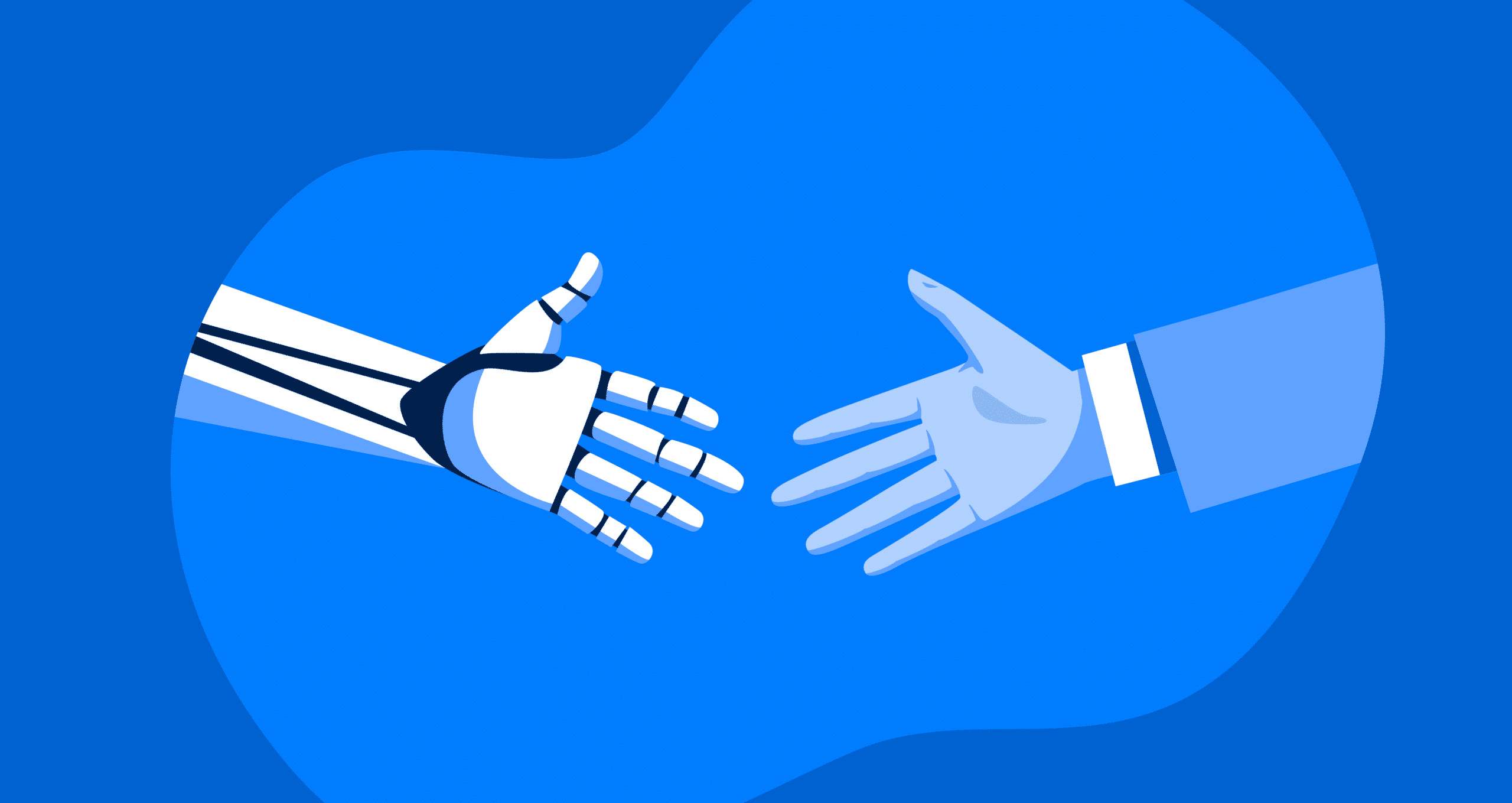Chatbots have become the most common interaction between humans and AI. With the ability to manage everything from internal workflows and document searches to pre-sales conversations and customer service issues, AI-powered chatbots are very attractive assets to modern business leaders. In fact, nearly two-thirds of B2B companies currently use one on their website.
While companies have been raving about the benefits of chatbots in recent years, customers have been less enthused by them. Why?
The ubiquity of chatbot builders has come with a price. Many organizations are working their way through the trough of disillusionment with regards to the technology—not knowing how to implement it in the right way. This harkens back to the early days of the web when anyone could build a website with Frontpage Express, but it didn’t mean they should.
Yet, when implemented correctly, chatbots have the power to transform business operations and live up to their hype. In fact, we’ve seen chatbots drive double-digit increases in customer satisfaction scores and accelerate trust with users. Doing so requires a series of principles—we’ll call them “SAASIE”—to ensure that trust is paramount.
Getting SAASIE.

The first principle is that chatbots should be self-service. They should handle the nuances of human language: typos, slang, jargon, context, etc. They should be easy to spot on the page and easy to interact with – whether you are on mobile or desktop.
Next up is anticipation. Anticipation is knowing what the user wants to do before they try to do it. Think of it as the first fruits of the personalization movement. Businesses have realized how important personalization is for end-users. Despite this, only 15% of CMOs believe they’re on the right track with personalization. While customer personas have helped identify potential customer profiles in the past, AI-powered chatbots can now create even more personalized experiences by anticipating what the user wants before he/she interacts with the website.
Following anticipation is automation. Automation takes a complex workflow and – with a few short inputs – kicks off an entire process. If your company’s bot is merely answering questions, it’s missing out on the full gamut of what’s possible to accomplish with a natural language experience. While chatbots aren’t a perfect science yet, automation allows them to make fewer mistakes than many of their human counterparts. Bots won’t forget to send an email in three days or update an internal record. The best bots are like having the power to make it so at your fingertips.
Speed is another principle that most bots utilize. But speed is more than just page load and natural language processing times. Speed encompasses how quickly you can resolve your problem. This involves a significant amount of conversational design to avoid being trapped in an Abbott and Costello routine. People want to have conversations with people, even when they’re communicating with a machine. Chatbots allow you to design responses that sound human. They make it possible to engage in meaningful conversations with every person who visits your website. The more human a chatbot sounds, the quicker the user can solve their problem and the more likely the user will be satisfied with the experience.
Those workflows we talked about earlier? They’re pretty worthless without the requisite integrations needed for your processes. From our own data at Capacity, we’ve seen the average client use over six different app integrations across their user base. If your customer-facing bot can’t connect to Salesforce, Marketo, Hubspot, Google Workspace, etc., you’re going to be in a world of hurt.
Lastly, let’s talk about escalation. I can speak to this one at a personal level. During the height of the pandemic, I was on the UPS website trying to track a package that was late to ship (it was an iPad keyboard for some school-at-home time). I asked my question to their UPS chat and ran into three issues. Strike one – the bot didn’t know the answer to my question. That happens sometimes, no harm no foul. Strike two – it didn’t know that it didn’t know the answer. Without a feedback mechanism in place, I couldn’t help it improve for next time. And finally, strike three was that there was no way to escalate my issue up to a real human being. I couldn’t chat with a human after the experience failed. The best bots actively work through each of these points.
Chatbots fuel always-on customer support.
When it comes to customer service, the beauty of chatbots is that they allow for 24/7 support. Customers, at any time of the day or night, weekend or holiday, can receive personalized responses to guide their process and provide the necessary information without any human intervention. This is not even a new breakthrough. Four years ago, IBM found up to 80% of routine customer service questions can be answered by a chatbot. With new advances in natural language processing, this number will continue to rise.
With these SAASIE principles in mind, companies can use AI-powered chatbots to learn from daily interactions and become more “human” while still delivering the immediate responses customers want. In 2021, the organizations investing in chatbots will build solid customer relations because of the clear, 24/7 communication chatbots provide. Giving your customers a stable, always-on resource will benefit your business and build their trust in you.


